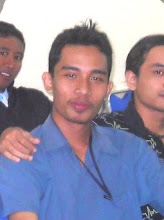This is default featured post 1 title
Go to Blogger edit html and find these sentences.Now replace these sentences with your own descriptions.This theme is Bloggerized by Lasantha Bandara - Premiumbloggertemplates.com.
This is default featured post 2 title
Go to Blogger edit html and find these sentences.Now replace these sentences with your own descriptions.This theme is Bloggerized by Lasantha Bandara - Premiumbloggertemplates.com.
This is default featured post 3 title
Go to Blogger edit html and find these sentences.Now replace these sentences with your own descriptions.This theme is Bloggerized by Lasantha Bandara - Premiumbloggertemplates.com.
This is default featured post 4 title
Go to Blogger edit html and find these sentences.Now replace these sentences with your own descriptions.This theme is Bloggerized by Lasantha Bandara - Premiumbloggertemplates.com.
This is default featured post 5 title
Go to Blogger edit html and find these sentences.Now replace these sentences with your own descriptions.This theme is Bloggerized by Lasantha Bandara - Premiumbloggertemplates.com.
Friday, January 28, 2011
Djakarta 1966: Soekarno was everything Soeharto was not

After seeing a bad movie, Djakarta 66 is kind of revelation. History, by any definition is written by the ruler, however, time is always the winner.
Djakarta 66 was made by Arifin C Noer in 1988 (JB Kristanto's version is 1982, however the credit in the film states 1988 which is more reliable, I guess), telling a [his]tory about the controversial Supersemar. Kineforum screens the film today and 9 January 2011 as part of the #decompression programme, an anniversary celebration by collective ruangrupa. Lisabona Rahman with filmmaker, Anggun Priambodo work hand in hand to curate a film programme about Jakarta. With my usual gang, we were watching the 35mm format with mixed feeling. I found the film funny yet brave. Another found it great and amusing. Djakarta 66 is the third of New Order (or rather, Soeharto's trilogy). The first film is Serangan Fajar, made in 1981, followed by notorious Pengkhianatan G-30-S PKI in 1982.
Djakarta 66 focuses on the political events after the failed coup d'etat by allegedly Indonesian communist party. Jakarta streets were full of students' demonstrations. Universitas Indonesia as main camp of student organisations such as KAMI sent thousands of their students to Bogor Palace and Presidential Palace to demand Tritura (those are three public's demand: ban Indonesian communist party, reform the cabinet, and reduce the price?!). Soekarno was forced to sign the Supersemar document (or wasn't it?). On March 11, 1966, Soekarno might (or might not) sign a letter giving the Army commander Lt. Gen.Suharto authority to take whatever measures he "deemed necessary" to restore order to the chaotic situation during the Indonesian killings of 1965–66.
Some might think that Arifin C Noer worked as a propaganda film specialist. His film, Pengkhianatan G-30-S PKI (my friend, Nayla, discusses this film extensively in her thesis) frequently is read as a propaganda text. But modern eyes reveal a contradictory account. As for Djakarta 66, I feel that our reading on Arifin C Noer's film should be extended radically. Djakarta 66 is 135 minutes long film, with almost one hour of its original version was cut by authority for reason of provoking new radicalism to students. Written by Bur Rasuanto (who had opportunity to read Cornell paper prior of writing the script) and Arifin C Noer himself, the movie presents critical version of 1966 Supersemar.
The key feature of Noer's work is his distinctive approach to historical genre and Indonesian critical history, in addition to his mastery over visual/cinematic languages. His Pengkhianatan is not only ghost in Indonesian political history, but also the ghost for Indonesian cinema as a few cineaste can go beyond his ouvre. His Djakarta 66 goes further as his cinematic and technical quality will make contemporary films look lame.
If one reads it against the grain, Djakarta 1966 is a mocking text, showing Soeharto as you-know-who: a Javanese military with hidden agenda in his back. He worked very hard (too hard) to be in power --with his limited resources and intelligence. Young filmmakers should learn from him: historia magistra vitae, history is the teacher of life.
Tanah Lot Bali
Indonesia is undoubtedly a dream destination for tourists who wish to enjoy a relaxing vacation. Indonesia is a world of fantasies where there are almost endless numbers of things to do and see. The picturesque island of Bali in Indonesia has got many popular tourist attractions and Tanah Lot is only one of them.Tanah Lot is only one of the popular recreational tourist attractions in Bali, which is a must visit for all who go to the island.
So when on a trip to Indonesia make it a point to visit Tanah Lot in Indonesia and have a memorable experience.













